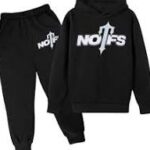LED screens for outdoor use have become an increasingly popular solution for businesses, event organizers, and public institutions looking to capture attention, engage audiences, and deliver visual content with clarity and impact. These screens, also known as outdoor LED displays, are engineered to function efficiently in a variety of weather conditions while maintaining high brightness levels and durability. Whether they are used for advertising, information display, or entertainment purposes, LED screens have proven to be a powerful and versatile medium that transforms outdoor communication and presentation.
One of the most significant advantages of outdoor LED screens is their exceptional brightness, which makes them clearly visible even in direct sunlight. Traditional display technologies often struggle with visibility in brightly lit environments, but LED screens are designed with high-luminance capabilities that allow content to remain sharp and vivid at all times. This feature is particularly important for digital billboards, transportation displays, and event led screens for outdoor where legibility and visibility are critical. The ability to maintain image quality and brightness ensures that the intended message reaches its audience regardless of the time of day or weather conditions.
Another key feature of outdoor LED screens is their durability and weather resistance. These displays are built to withstand a wide range of environmental factors including rain, wind, snow, dust, and extreme temperatures. The materials used in manufacturing outdoor LED screens are often waterproof and corrosion-resistant, and the enclosures are sealed to prevent moisture and debris from entering. This robust construction makes them ideal for permanent installations in public spaces, stadiums, or along highways. Regular maintenance is typically minimal, as the screens are designed for long-term outdoor operation, providing businesses with a cost-effective solution over time.
The flexibility of LED screen sizes and resolutions makes them suitable for a wide array of applications. Whether it is a small display mounted outside a retail store or a massive screen installed in a city center for public announcements, LED screens can be customized to fit the specific requirements of the project. Modular panel systems allow for scalable configurations, meaning the screen can be made as large or as compact as needed. Additionally, advancements in LED technology have led to higher resolutions and pixel densities, which contribute to crisper images and smoother video playback even from a close viewing distance. This level of adaptability makes LED screens a top choice for a variety of outdoor settings.
Outdoor advertising is one of the most common and impactful uses of LED screens. Digital billboards have replaced many traditional static posters due to their dynamic capabilities and ability to display multiple advertisements in rotation. Advertisers can update content remotely in real-time, allowing for greater flexibility and responsiveness to market trends, weather changes, or time-specific promotions. For example, a restaurant might display breakfast offers in the morning and dinner specials in the evening, all on the same screen. This dynamic content scheduling maximizes the screen’s utility and increases engagement with passersby. Additionally, animated or video content can capture more attention than static images, making digital LED billboards a more effective medium for marketing.
Outdoor LED screens are also widely used in the entertainment industry, especially for live events such as concerts, festivals, sports games, and public viewings. These screens provide large, high-quality visuals that can be viewed by thousands of attendees, ensuring that everyone has a clear view of the action no matter where they are located. LED video walls can be mounted on stages, hung from structures, or set up on mobile trucks, offering event organizers a great deal of creative freedom. Live feeds, pre-recorded content, sponsor messages, and interactive visuals can all be broadcast seamlessly, enhancing the overall experience for attendees and increasing the value of sponsorships and promotions.




